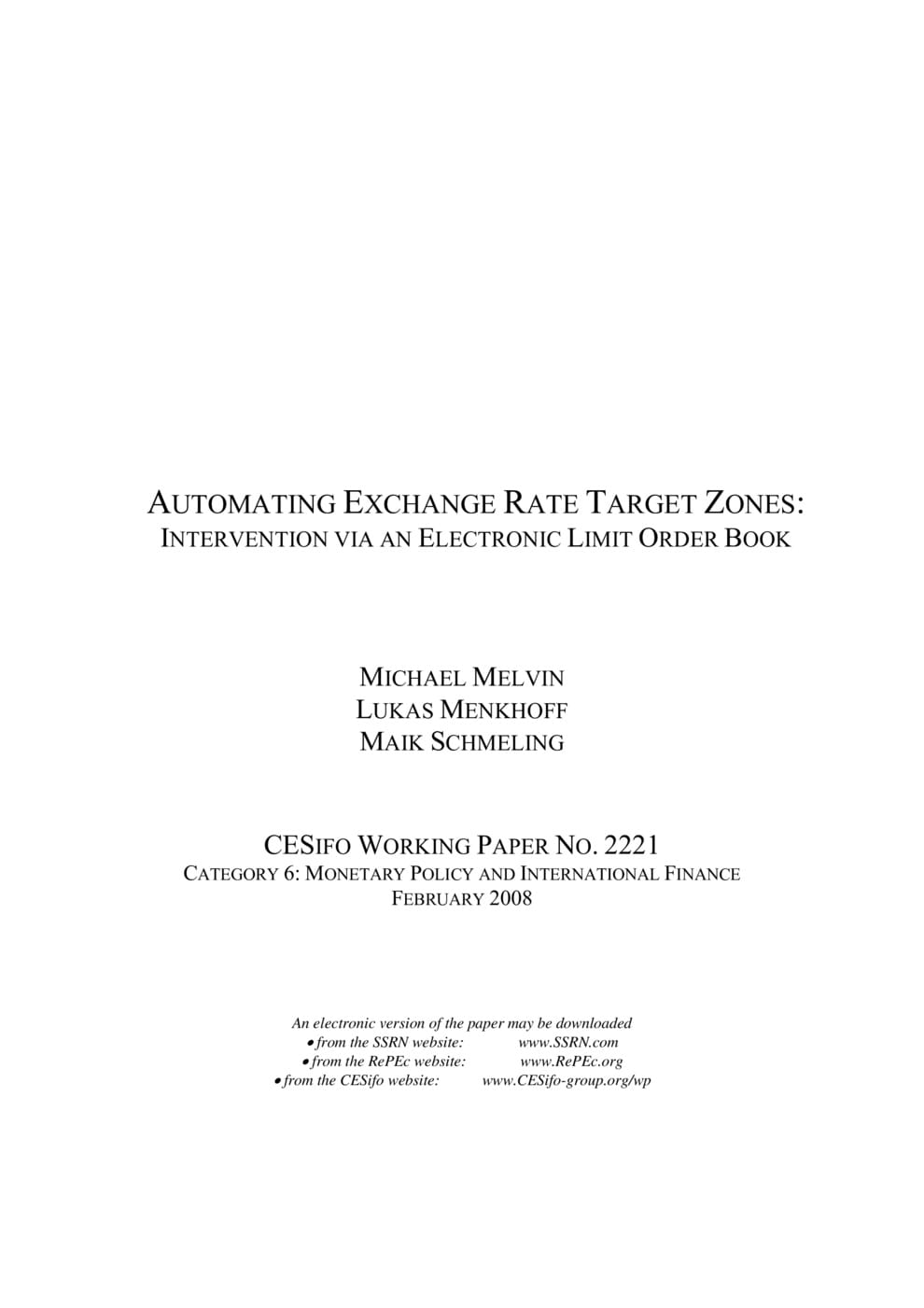Automating Exchange Rate Target Zones: Intervention via an Electronic Limit Order Book
CESifo, Munich, 2008
CESifo Working Paper No. 2221

This paper describes and analyzes “automated intervention” of a target zone. Unusually detailed information about the order book allows studying intervention effects in a microstructure approach. We find in our sample that intervention increases exchange rate volatility (and spread) for the next minutes but that intervention days show a lower degree of volatility (and spread) than non-intervention days. We also show for intraday data that the price impact of interbank order flow is smaller on intervention days than on non-intervention days. Finally, we reveal that informed banks take different positions than uninformed banks as they tend to trade against the central bank – which reflects a rational stance. Despite this position taking, the targeted exchange rate range holds and volatility, spread and price impact go down. Overall, the credible expression of an intervention band seems to achieve the desired effects of a target zone.